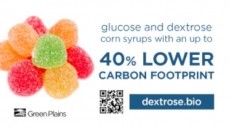Fibers show potential for gelatin replacement in candy
Scientists from the National University of Singapore and the Nestlé R&D Center in Singapore report that gelatin could be replaced by a combination of sugar and agarose for confectionery applications.
Writing in Food Hydrocolloids, the Singapore-based scientists state that, while gelatin is “the most frequently used structuring agent in confectionery products, it is increasingly falling ‘out of fashion’ with consumers and producers alike”.
The researchers therefore considered if soluble fiber could help replace gelatin for a variety of food products, including confectionery products. While the mixture of kappa-carrageenan and sugar, or agarose and sugar show a brittle performance at low levels of sugar, at higher levels the agarose showed better elasticity than gelatin, they noted.
“This rather under-researched area has other applications, for example, flavour encapsulation and preservation of bioactive molecules in glassy polysaccharide matrices,” wrote the researchers.
Gelatin and its alternatives
Gelatin is a translucent colorless substance, created by prolonged boiling of animal skin, connective tissue or bones.
It is most commonly used as a stabilizer, thickener, or texturizer in foods such as ice cream, jams and yogurt, and is also used to improve the mouthfeel of various products.
But despite its functionality the gelatin industry is increasingly threatened by vegetarian alternatives. For example, Avebe offers a potato starch-based ingredient as part of its Etenia range as a vegan alternative to gelatin for soft jellies and wine gum-type confectionery. Although there are other vegetarian alternatives, they often need to be labeled as ‘modified starch’.
However, according to Avebe the Etenia starches is that they can be listed as ‘starch’ rather than ‘modified starch’ on ingredient labels, therefore meeting manufacturers’ clean label requirements.
It is estimated that there are approximately 12 million vegetarians across Europe. Over a quarter of those live in the UK, with about 3.6 million people claiming to be vegetarians, according to The Vegetarian Society. A survey by NEMS Market Research valued the UK market for vegetarian food at £718.5m in 2007, up from £670m the year before.
Source: Food Hydrocolloids
Published online ahead of print, doi: 10.1016/j.foodhyd.2010.03.013
“Structure, sensory and nutritional aspects of soluble-fibre inclusion in processed food products”
Authors: Leewah Koh, Bin Jiang, Stefan Kasapis, Check Woo Foo



















